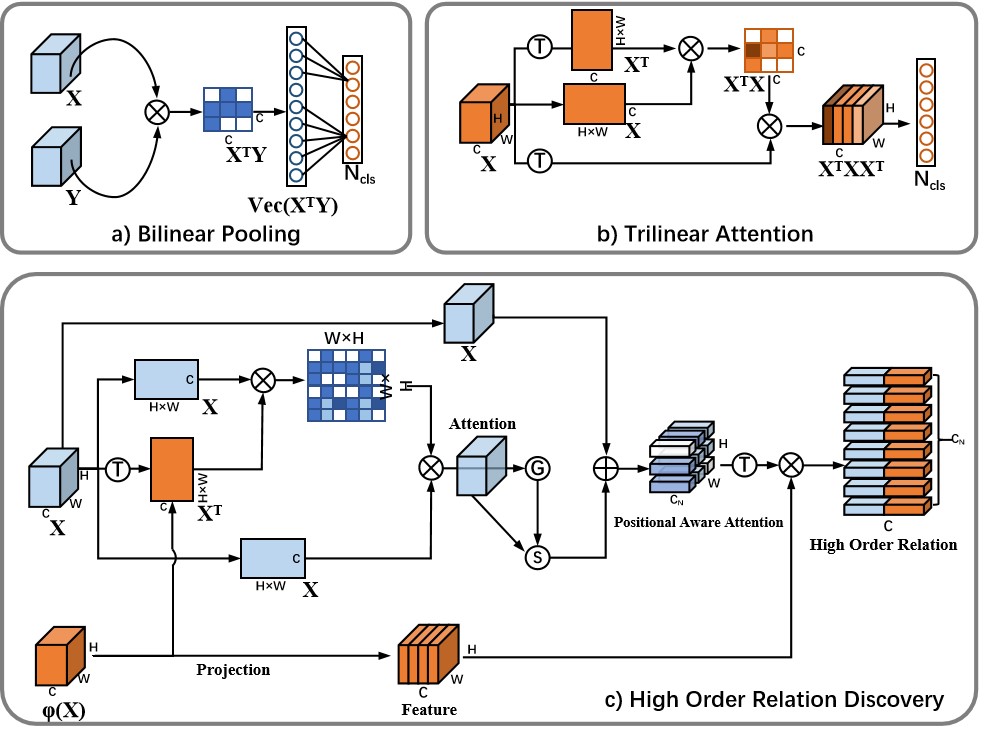Graph-based High-Order Relation Discovery for Fine-grained Recognition
Yifan Zhao, Ke Yan, Feiyue Huang, Jia Li*,
State Key Laboratory of Virtual Reality Technology and Systems, Beihang University
Tecent Youtu Lab, Shanghai, China
Motivations
The motivation of proposed approach. Our proposed approach first exploits the structurally channel-aware relationship b) into a high-dimensional graph embedding. Then these relation nodes are grouped into low-dimensional space d) with a semantic grouping strategy, forming the final grouped activations f).
Approach
The proposed graph-based relation discovery (GaRD) approach consists of three essential modules: the relation-discovery module to extract rich relation-aware high-dimension features, the graph-based semantic grouping module to find low-dimension feature embeddings, and the group-wise learning strategy is adopted to update the gradient using class centers.
Comparisons and Relations
Illustrations of different mutual attention methods. a) Bilinear pooling [28]: building channel-aware second-order relations, using vectorized features. b) Trilinear attention [49]: third-order channel relations, preserving the original feature shape. c) Our relation-discovery module: joint positiona
Results
Performance comparisons on several representative datasets. More results can be found in our paper.
Citation
-
Zhao, Y., Yan, K., Huang, F., & Li, J. (2021). Graph-Based High-Order Relation Discovery for Fine-Grained Recognition. In Proceedings of the IEEE/CVF Conference on Computer Vision and Pattern Recognition (pp. 15079-15088).



